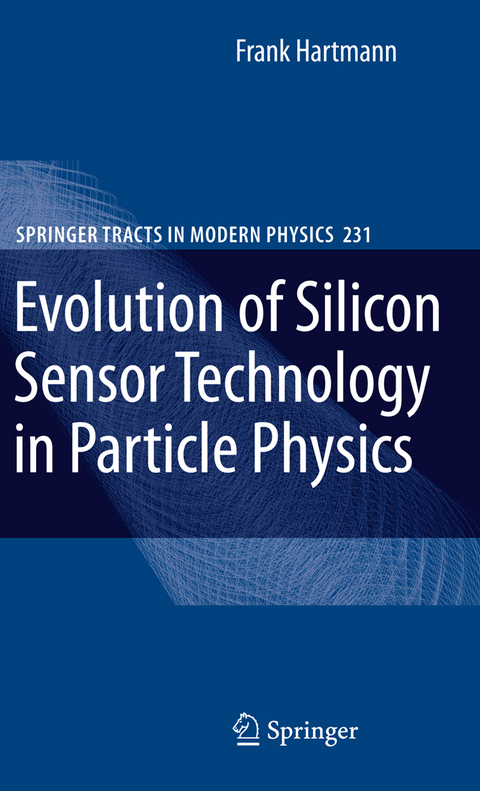
Evolution of Silicon Sensor Technology in Particle Physics
Seiten
2010
|
Softcover reprint of hardcover 1st ed. 2009
Springer Berlin (Verlag)
978-3-642-06416-6 (ISBN)
Springer Berlin (Verlag)
978-3-642-06416-6 (ISBN)
- Titel erscheint in neuer Auflage
- Artikel merken
Zu diesem Artikel existiert eine Nachauflage
The technological evolution of silicon detectors and their impact on high-energy particle physics are described in this monograph, which draws on the author's first-hand experience. Both the basic principles and final large-scale applications are covered.
In the post era of the Z and W discovery, after the observation of Jets at UA1 and UA2 at CERN, John Ellis visioned at a HEP conference at Lake Tahoe, California in 1983 "To proceed with high energy particle physics, one has to tag the avour of the quarks!" This statement re ects the need for a highly precise tracking device, being able to resolve secondary and tertiary vertices within high-particle densities. Since the d- tance between the primary interaction point and the secondary vertex is proportional tothelifetimeoftheparticipatingparticle,itisanexcellentquantitytoidentifypar- cle avour in a very fast and precise way. In colliding beam experiments this method was applied especially to tag the presence of b quarks within particle jets. It was rst introduced in the DELPHI experiment at LEP but soon followed by all collider - periments to date. The long expected t quark discovery was possible mainly with the help of the CDF silicon vertex tracker, providing the b quark information. In the beginning of the 21st century the new LHC experiments are beginning to take 2 shape. CMS with its 206m of silicon area is perfectly suited to cope with the high luminosity environment. Even larger detectors are envisioned for the far future, like the SiLC project for the International Linear Collider. Silicon sensors matured from small 1in. single-sided devices to large 6in. double-sided, double metal detectors and to 6in. single-sided radiation hard sensors.
In the post era of the Z and W discovery, after the observation of Jets at UA1 and UA2 at CERN, John Ellis visioned at a HEP conference at Lake Tahoe, California in 1983 "To proceed with high energy particle physics, one has to tag the avour of the quarks!" This statement re ects the need for a highly precise tracking device, being able to resolve secondary and tertiary vertices within high-particle densities. Since the d- tance between the primary interaction point and the secondary vertex is proportional tothelifetimeoftheparticipatingparticle,itisanexcellentquantitytoidentifypar- cle avour in a very fast and precise way. In colliding beam experiments this method was applied especially to tag the presence of b quarks within particle jets. It was rst introduced in the DELPHI experiment at LEP but soon followed by all collider - periments to date. The long expected t quark discovery was possible mainly with the help of the CDF silicon vertex tracker, providing the b quark information. In the beginning of the 21st century the new LHC experiments are beginning to take 2 shape. CMS with its 206m of silicon area is perfectly suited to cope with the high luminosity environment. Even larger detectors are envisioned for the far future, like the SiLC project for the International Linear Collider. Silicon sensors matured from small 1in. single-sided devices to large 6in. double-sided, double metal detectors and to 6in. single-sided radiation hard sensors.
Frank Hartmann arbeitet als freier Journalist für die Publikums- und Fachpresse. Er recherchiert seit Jahren auf den Gebieten der Wirtschaftsspionage und der Computerkriminalität, kennt Behörden, Betroffene und Hacker.
Basic Principles of a Silicon Detector.- First Steps with Silicon Sensors: NA11 (Proof of Principle).- The DELPHI Microvertex Detector at LEP.- CDF, the World's Largest Silicon Detector in the 20th Century; the First Silicon Detector at a Hadron Collider.- CMS, Increasing Size by two Orders of Magnitude.- Continuing the Story: Detectors for the SLHC and the ILC.- Conclusion and Outlook.
| Erscheint lt. Verlag | 19.10.2010 |
|---|---|
| Reihe/Serie | Springer Tracts in Modern Physics |
| Zusatzinfo | X, 204 p. 352 illus. |
| Verlagsort | Berlin |
| Sprache | englisch |
| Maße | 155 x 235 mm |
| Gewicht | 328 g |
| Themenwelt | Naturwissenschaften ► Physik / Astronomie ► Atom- / Kern- / Molekularphysik |
| Naturwissenschaften ► Physik / Astronomie ► Hochenergiephysik / Teilchenphysik | |
| Schlagworte | b-tagging • Collider • detector • Hadron • High Energy Physics • Linear collider • Particle physics • quality control • Silicon Detector • Tracking Detector |
| ISBN-10 | 3-642-06416-7 / 3642064167 |
| ISBN-13 | 978-3-642-06416-6 / 9783642064166 |
| Zustand | Neuware |
| Informationen gemäß Produktsicherheitsverordnung (GPSR) | |
| Haben Sie eine Frage zum Produkt? |
Mehr entdecken
aus dem Bereich
aus dem Bereich
Buch | Softcover (2024)
Wiley-VCH (Verlag)
CHF 83,85



